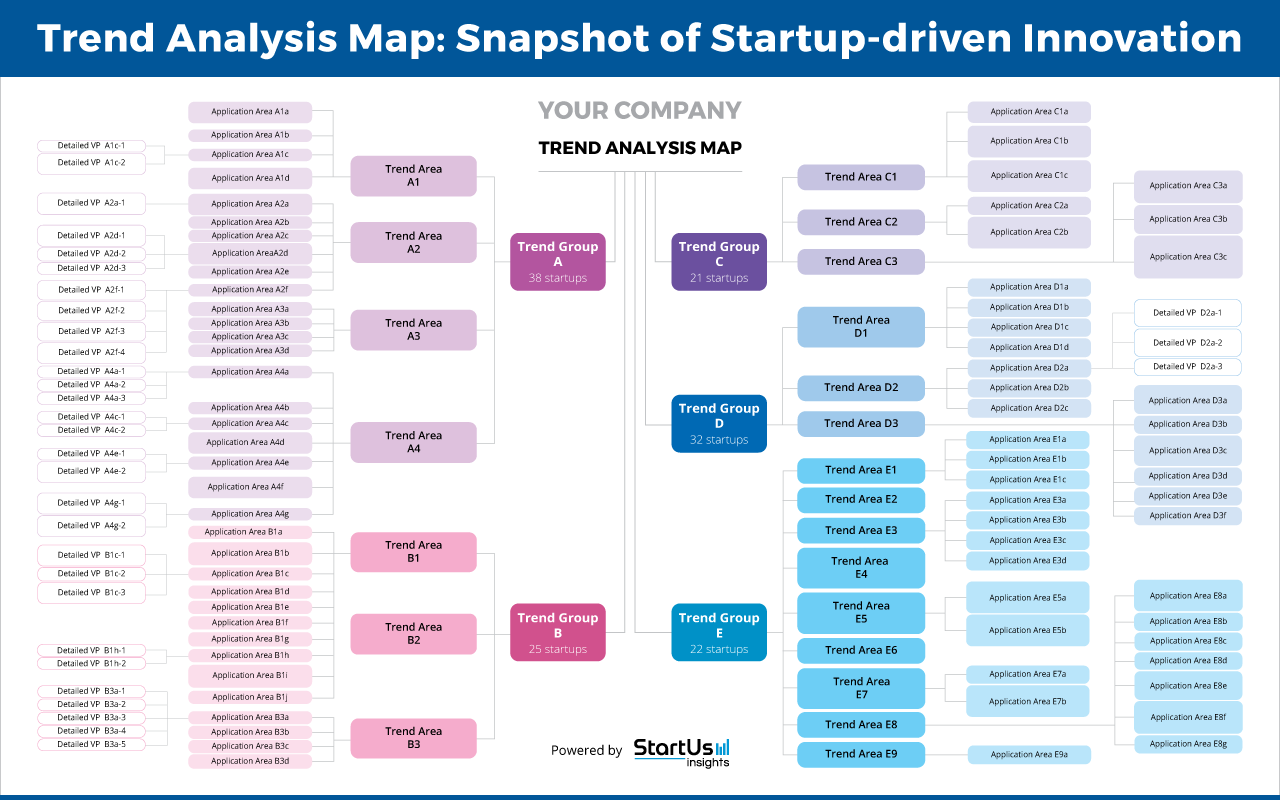Accelerate Productivity in 2025
Reignite Growth Despite the Global Slowdown
According to the open innovation paradigm, businesses can no longer afford to innovate in a vacuum. With emerging startups globally accelerating disruptive innovations across industries, companies need to seek innovation externally. Innovation also needs to be integrated with business processes to make the most impact on productivity and competitiveness. Even within companies, different business units can no longer act as silos. Innovation managers looking to define the challenges for their business must take a bottoms-up approach that takes feedback from across business units.
Integrated innovation applies new product development (NPD) principles across the whole value chain. These include operations like idea management, prototyping, and portfolio optimization. This speeds up product development while boosting disruptive or radical innovation as compared to sustaining or incremental innovation.
How to enable Integrated Innovation
Depending on your industry, your approach to integrated innovation may differ. This depends on how easy it is to develop new technologies and integrate them into your existing systems. However, there are a few principles that any company adopting integrated innovation must consider:
Distributed Innovation Process Ownership
Traditionally, companies have a separate department for innovation that suggests which research directions are worth investing resources in. These units did not necessarily interact with other business units in the company such as marketing, research and development (R&D), or maintenance. Consequently, they were unable to identify business challenges that are screaming for innovative disruptions. Now, companies distribute the innovation process ownership across business units, leading to a more proactive approach to innovation.
Innovation as a Business Strategy
Business needs are often the primary drivers of innovation. However, for many companies, this causative link is the only relationship between business and innovation. Consequently, innovation is reactive, responding to the changing competitive environment and threats from existing and emerging players. Companies that embrace open innovation, on the other hand, see innovation as an integral component of business strategy.
Focus on Disruptive Innovation
Incremental innovation is inexpensive but provides a limited competitive advantage. On the contrary, disruptive innovation is a riskier bet but has the potential to generate a long-term competitive advantage. Integrated innovation allows companies to discover truly novel growth opportunities in adjacent or new business areas. This allows them to focus on disruptive innovation while sustaining their existing market leadership.
Benefits of Integrated Innovation
Integrated innovation provides a comprehensive approach to managing innovation and its impact within an organization. It has the following benefits:
1. Productivity Optimization
Integrated innovation involves collaboration among different business units within a company, requiring them to share resources towards a common objective. This leads to a holistic view of business process inefficiencies across all operations of the company. In turn, this allows companies to effectively leverage innovation intelligence to address these inefficiencies and optimize productivity across the board.
For example, customer-centric innovation enables companies to incorporate customer feedback to guide new product development. This approach not only includes customer-facing employees in the innovation process but improves the quality of their services as well.
2. Faster Response to Emerging Trends
The market today is hypercompetitive with the rapid emergence of new technologies and changes in consumer preferences. Integrated innovation takes a proactive approach, leading to the proactive identification of competitive threats. Further, it enables quick integration of innovative solutions that counter these threats. This way, it allows companies to respond faster to changing technology and consumer trends.
To do this, companies perform data-driven technology landscaping to map emerging technology trends. In addition to forecasting which trends will have the most impact on their industry, it quantifies the scope of commercialization of different technologies and analyzes their impact on the industry they operate in as well as adjacent industries.
3. Identification of Growth Opportunities
Disruptive innovation rarely occurs with a completely new product or service alone. There is a high risk of failure and the competitive advantage doesn’t last long as copycats flood the market. On the contrary, adapting existing and emerging technologies to new needs is a low-risk approach to innovation. Integrated innovation allows companies to identify such growth opportunities, reducing costs and increasing profits.
Startups often have cheaper or quicker innovations to business needs. By working with them, businesses can identify new opportunities for growth. For example, data-driven innovation scouting allows companies to identify opportunities to reduce costs or speed up the time to market.

Innovation intelligence services such as trend landscaping identify opportunities for integrated innovation.
Leverage Innovation Intelligence for Integrated Innovation
Integrating innovation with business processes will be critical to the long-term success of businesses in a hyper-competitive environment. Leveraging innovation intelligence allows you to identify startups and technologies that enable integrated innovation for you. At StartUs Insights, we offer a range of services enabled by the StartUs Insights Discovery Platform covering over 2,5 million startups & scaleups globally. Some of our services that help you achieve your open innovation goals include:
- Trend Scouting: Identify emerging and latent trends and developments that will impact your industry
- Technology Scouting: Reveal emerging technologies and learn how they match your innovation needs
- Startup Scouting: Discover over 2,5 million startups & scaleups globally, scouting the right partners & saving you weeks of desk research
To discover what an integrated innovation approach can do for you, get in touch today!

![Future of Robotics: 12 Trends Powering the Next Wave [2025-2030]](https://www.startus-insights.com/wp-content/uploads/2025/06/Future-of-Robotics-SharedImg-StartUs-Insights-noresize-420x236.webp)
![Innovation During Recession: Key Data-Driven Strategies to Thrive [2025-2026]](https://www.startus-insights.com/wp-content/uploads/2025/06/Innovation-during-Recession-SharedImg-StartUs-Insights-noresize-420x236.webp)
![Business Resilience Planning: 10 Strategies & Technologies to Tackle the Current Market [2025-2026]](https://www.startus-insights.com/wp-content/uploads/2025/06/Business-Resilience-Planning-SharedImg-StartUs-Insights-noresize-420x236.webp)



